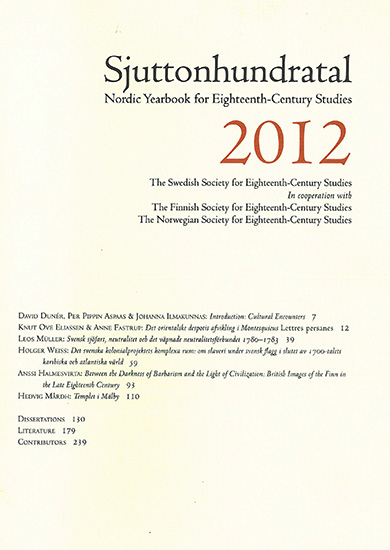Templet i Mälby
DOI:
https://doi.org/10.7557/4.3248Keywords:
neoclassical architecture, reconstruction, landscape garden, Temple of Theseus, Carl August EhrensvärdAbstract
The Temple in Mälby
In the mid 1780s the count, naval officer, and architect Carl August Ehrensvärd (1745–1800) designed the main building and surrounding gardens at Mälby estate (Gnesta, Sweden). Ehrensvärd’s close friend, the high-ranking civil servant Johan Gustaf von Carlson (1743–1801), was the owner of the estate who commissioned the project. A number of buildings were erected in the ambitiously planned landscape garden, among them a Greek temple, a full-scale reconstruction of the Temple of Theseus in Athens (today known as the Temple of Hephaestus). This temple was one of the first examples of pure neoclassical architecture in Sweden. The aim of the article is to place the temple in a contemporary philosophical, literary, and artistic context, as well as to draw some conclusions about its erection, design and social function. Because the building has long since disappeared, the source material available today includes guidebooks, sketches, letters, and research conducted in the fields of literature, art, and gender studies.









